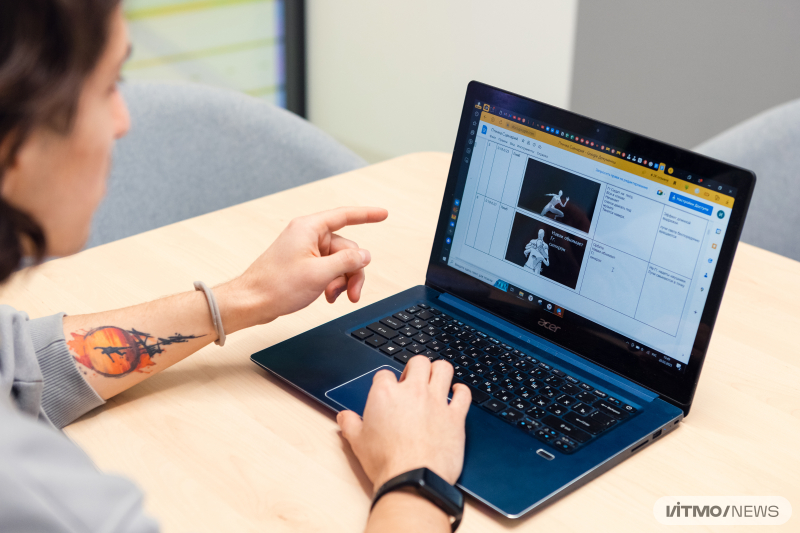Contents
- Defining your role on the team
- Hard skills
- Soft skills
- Staying on top of trends
- Video planning checklist
Defining your role on the team
The film industry involves multiple specialists, from directors and producers to screenwriters, operators, and gaffers. In order to understand their responsibilities and choose the one for your liking, you should try on different roles.
“When I first started, I did everything on my own: I was the producer, the cameraperson, and the editor. Then, I found an operator and a gaffer who helped me with shooting and gradually pulled together my own team,” shares Iskander Garipov.
One of the best ways to find your place in the industry is to participate in competitions and online courses. Last November, VK’s Prostor invited everyone to learn more about a job of their choice (be it a producer, videographer, or director), attend lectures on music video production, and meet industry experts. Those who successfully completed their home assignments had the chance to jointly come up with a music video idea for performers Tosya Chaikina, Ramil', Andro, or HammAli & Navai, and if approved, film it on their own.
Iskander Garipov excelled in the producing track and got to work with HammAli & Navai in December and January. As part of their crew, he had to find a team and locations, plan video production, and calculate a budget estimate. Supported by director Alexey Bogdanov, videographer Viktor Krylov, and the creative agency FMT.JETLAG, he produced the viral video clip Птичка, which reached over 800,000 views in three weeks.

Iskander Garipov. Photo by Dmitry Grigoryev / ITMO.NEWS
Hard skills
Video production requires a diverse background in directing, producing, shooting, editing, and postproduction. In other words, if you want to make your music videos, you need to know how to come up with gripping scripts, find the right people for your team, follow a budget, as well as shoot, edit, and add graphics, animations, and 3D models into your videos. You can acquire all of these skills by taking an online course or studying computer technologies in design at ITMO. In 2023, the program’s students are offered several specializations to choose from: design, the development of graphics and web applications, computer graphics, and multimedia in education. Upon graduation, students can seek employment as web and graphic designers, 3D modelers, visual effects specialists, or game designers.
“I have multiple courses revolving around visual arts. For instance, within the course on the fundamentals of composition I learn to set up objects in the shot, and the painting course taught me all about lighting and colors. I’m also keen on 3D creation tools, such as Unreal Engine. My studies help me gain a more profound view on visual arts and develop my eye for good designs, which, in turn, translates to other fields, too,” says Iskander Garipov.

Photo by Dmitry Grigoryev / ITMO.NEWS
Apart from the theoretical background, you must be well-versed in the following software:
- Blender (for 3D modeling);
- Mixamo (for 3D models animation);
- DaVinci or Adobe Premiere Pro (for editing).
Soft skills
Specialists should be able to advocate for their views and persuade their team members, if needed.
“As a producer, I need to supervise the financial aspects of music video production. In case a videographer wants to use a drone or several cameras for the video, I have to explain what we can and what can’t afford and offer alternatives,” says Iskander Garipov.
Apart from efficient communication, they can’t do without stress resistance and an ability to tackle challenges that may arise on set. For instance, a key actor may fall sick right before the shooting, and a producer will have to quickly reorganize the process with minimal losses. Working on commercial projects, especially big ones, requires knowing how to file documents and make estimates, as well.
Staying on top of trends
To make successful music videos, you need to be good at cinematographic techniques and be able to tell apart obsolete and current methods. Your secret tool here is a good eye for trends, which you can develop by absorbing video content, especially the videos hitting the top-charts.
Moreover, you should constantly analyze trends. As noted by Iskander Garipov, today’s market is booming with music videos inspired by old films (e.g., Комната (Room – Ed.) by Tosya Chaikina or IT advances (e.g., Lost by Linkin Park, which is made by a neural network).
You can also advance your eye for cinematography by following your favorite video makers on social media. By doing so, Iskander Garipov got to assist at an IOWA’s shoot and met top-tier experts in the industry.

Iskander Garipov. Photo by Dmitry Grigoryev / ITMO.NEWS
Video planning checklist
- Come up with an idea and write a treatment: a detailed synopsis of your clip, characters, and locations, as well as references: editing, lighting, clothing, etc.;
- Working on a large-scale project with a team, you need to check how your video concept corresponds to your budget and have an approved estimate and production plan;
- Make a storyboard for your video. To visualize your video with a storyboard, you need to write out the entire script and illustrate what actors, cameras, lighting, and sound should do during filming;
- Create a 3D previsualization. With specialized software, you can make a stripped down version of your video using geometric shapes and camera movements;
- Design your shooting schedule – with scene details and storyboards. Such a timeline will help you understand how the plot of your video will evolve, what you need to pay special attention to, and how long each scene will take.
- Call sheets are a must for big-team projects. These documents include all the necessary information: the location, cast call times, and a shooting schedule.
- And, finally, think about what editing techniques, colors, and animations you want to use.





